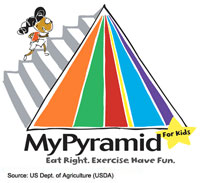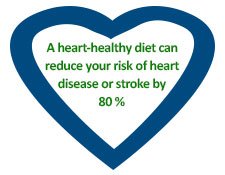
Eating a healthy diet during pregnancy will help your baby to develop and grow besides keeping you fit and fine. Do not forget, the food you eat is your baby’s main source of nutrition. Keep in mind the following while planning healthy nutrition for your pregnancy.

Your daily meals should include a variety of foods from four main food groups
Fruits and vegetables: 7-8 servings each day
Starchy food such as bread, pasta, rice and potatoes Aim for 6-7 servings per day.
Proteins such as egg, fish, lean meat, chicken and legumes. Aim for 2 servings each day.
Dairy products such as milk, cheese and yogurt. Aim for 2 servings per day.

Do not forget to take your Prenatal vitamin-mineral supplement daily. It supplements your baby with all-important nutrients essential for optimal growth and development like omega 3s, folic acid, vitamin B12, vitamin D, vitamin C and zinc.
Omega-3 fatty acids are not synthesized by the human body and therefore must be obtained from diet or supplementation.

Omega-3 fatty acids are essential nutrients for growth and development of your baby.
DHA is the most important Omega-3 fatty acid required for the development of brain, eyes and central nervous system of the growing baby. It also increases birth weight, head circumference and birth length.
Fish is a good source of protein and omega-3 fatty acids for the growing baby but you need to be careful about the mercury content. Recent research has suggested that fish you eat might be poisoned with mercury. Mercury can prove to be very harmful for the nervous system of the baby. Fish get their DHA by eating DHA-rich algae. So, to avoid contaminants like pesticides and mercury in fish you can get that same DHA from algal-based DHA supplement.
1. Diet for a healthy pregnancy

A growing child becomes more active day by day and his nutrition should support his growth. Like adults, children also need to consume a variety of foods from different food groups to get all the nutrients necessary for their growth and development.
Children’s calorie needs vary widely, depending on height, weight and individual activity levels:
| Age of child | Average calorie requirement |
| 1 year old | 1000 calories |
| 3 year old | 1300 calories |
| 7 year old | 1800 calories |
The United States Department of Agriculture (USDA) and the US Department of Health and Human Services have suggested the following food pyramid to guide parents in selecting foods for children 2 years and older.
The Food Pyramid is divided into 6 colored bands representing the 5 food groups plus oils:

Orange represents grains: Make half the grains consumed each day whole grains. Whole-grain foods include oatmeal, whole-wheat flour, whole cornmeal, brown rice and whole-wheat bread. Check the food label on processed foods - the words "whole" or "whole grain" should be listed before the specific grain in the product.
Green represents vegetables: Choose a variety of vegetables, including dark green and orange-colored kinds, legumes (peas and beans), starchy vegetables and other vegetables.
Red represents fruits: Focus on fruits. Any fruit or 100 percent fruit juice counts as part of the fruit group. Fruits may be fresh, canned, frozen, or dried, and may be whole, cut-up or pureed.
Yellow represents oils: Know the limits on fats, sugars, and salt (sodium). Make most of your fat sources from fish, nuts, and vegetable oils. Limit solid fats like butter, stick margarine, shortening, and lard, as well as foods that contain these.
Blue represents milk: Milk and milk products contain calcium and vitamin D, important for building and maintaining muscle and bone tissue. Whole cow’s milk may be introduced after an infant’s first birthday, but lower-fat or skim milk should not be used until the child is at least two years old.
Purple represents meat and beans: Go lean on protein. Choose low fat or lean meats and poultry. Vary your protein routine - choose more eggs, nuts, seeds, peas and beans.
Activity is represented on the pyramid by the steps and the person climbing them, as a reminder of the importance of daily physical activity.

Like any other part of the body, the brain needs the right nutrients to make it work properly. Fats, especially omega-3 fatty acids, are important for child’s mental development. DHA is the most important Omega 3 fatty acid which plays a major role in child’s cognitive development.
1. School-Aged Child Nutrition

Healthy eating is about feeling great, having more energy, staying active, stabilizing your mood and keeping yourself as healthy as possible. This can be achieved by making healthy food choices in your day-to-day life.

Colorful fruits and vegetables are foundation of a healthy diet. They are low in calories and high in nutrients. Which means they are packed with vitamins, minerals, antioxidants and fibers. You should eat five portions of a variety of fruits and vegetables every day.

Carbohydrates are the main source of energy for our body. They should make up around one third of everything we eat. The trick is to choose wholegrain or whole meal varieties of starchy foods for long lasting energy.
Healthy carbs or good carbs include wholegrain or multigrain bread, whole wheat pasta, brown rice and beans. These are digested slowly, keeping blood sugar and insulin levels stable and makes you feel full for longer.
Unhealthy carbs or bad carbs are foods such as white flour, refined sugar and white rice/pasta. These are digested quickly and cause spikes in blood sugar levels and energy.

Fat is an energy source for the body. Good sources of healthy fat are needed to nourish your brain, heart as well as hair, skin and nails.
DHA is one of the most important Omega-3 fatty acid and is particularly important for normal brain function at all ages. It helps maintain normal vision and memory. It has shown to reduce cardiovascular disease, improve cognition and help prevent dementia.
Monounsaturated fats: sources are canola oil, peanut oil, olive oil, avocados and nuts (almonds, pecans).
Polyunsaturated fats, including Omega-3 and Omega-6 fatty acids: sources are fatty fish (salmon, sardines), flax seed and walnuts.
Recent research has suggested that fish you eat might be contaminated with mercury. Mercury can prove to be very harmful for the nervous system. Fish get their DHA by eatingDHA-rich algae. So, to avoid contaminants like pesticides and mercury in fish you can get that same DHA from algal-based DHA supplement.
Saturated fats and Trans fats: sources are red meat, whole milk dairy products, vegetable shortenings, crackers, candies, fried foods and baked goods.

Protein gives us the energy to get up, go— and keep going. Protein in food is broken down into the 20 amino acids that are the body’s basic building blocks for growth and energy, and essential for maintaining cells, tissues, and organs. A lack of protein in our diet can slow down growth, reduce muscle mass, lower immunity, and weaken the heart and respiratory system. Protein is particularly important for children, whose bodies are growing and changing daily.
Try different types of proteins: beans, nuts, seeds, tofu, eggs, meat, pulses and soy products.

Milk and dairy foods like cheese and yoghurt are good sources of calcium, which is very important for life long bone health in both men and women.
You can enjoy the health benefits of dairy foods without eating too much fat by using skimmed milk or 1% fat milk, low fat cheese and yoghurt.

It is a known fact that weight control and regular exercises are critical for keeping your heart healthy- but the food you eat also matters just as much. Being careful about what you eat- and what you don’t eat can help you lower cholesterol, control blood pressure and blood sugar levels and keep a check on your body weight.
Limiting saturated fats and cutting out trans fats is the most important step towards heart healthy diet. Both of these fats raise your low-density lipoprotein (LDL) or “bad” cholesterol level which increases risk of heart diseases.
Here are some tips to follow:-
Avoid solid fat: While cooking or serving, try to reduce the use of solid fats like butter or margarine. Instead, flavor your food with herbs or lemon juice.
Low fat options: Go for lower fat counterparts in place of high-fat foods. For example, have baked potatoes with salsa or low-fat yogurt instead of butter/cheese. While cooking, use liquid oils like canola, olive, safflower or sunflower.
Check label: Many snacks like cookies, crackers and chips are labeled as reduced fat but actually are made with oils containing trans fats. If “partially hydrogenated” is mentioned on the label that means it definitely has trans fats.
| Fats to choose | Fats to limit |
| Olive oil | Butter |
| Canola oil | Lard |
| Margarine that’s free of trans fats | Bacon fat |
| Safflower oil | Cream sauce |
| Sunflower oil | Hydrogenated margarine and shortening |
| Walnuts, almonds | Cocoa butter |
| Peanuts | Coconut, palm, cottonseed palm-kernel oils |
How much you eat is as important as what you eat. Overfilling your plate and eating until you feel stuffed can lead to consuming more calories and fats than you actually require. This leads to weight gain which in turn causes high blood pressure. Maintaining a healthy body weight is key to reducing risk of heart disease.
Know about serving size: It is a specific amount of food, defined by common measurements such as cups, ounces or pieces. For example, serving size for pasta is ½ cup, serving size of meat, fish or chicken is 2-3 ounces (57-85 grams). Judging serving size is a learned skill. You may need to use measuring cups and spoons or a scale until you're comfortable with your judgment.
Restaurant portion: Portion size served in restaurants is often more than 1 person’s requirement. Try to split the dish with your friend or companion, or pack it and carry it home for next day’s lunch.
Fruits and vegetables supply you with more fibers, vitamins and minerals but very less calories. That’s why they are considered heart healthy.
| Which fruits and veggies to choose? | Which fruits and veggies to avoid? |
| Fresh or frozen fruits and veggies | Coconut |
| Low-sodium canned veggies | Vegetables with creamy sauces |
| Canned fruit packed in juice or water | Canned fruit in heavy syrup |
| Fruit salad without added sugar | Frozen fruits with added sugar |
Whole grains are rich in fiber and other nutrients that play a role in maintaining blood pressure and heart health. By substituting refined grain products with whole grain, you can easily make your diet, a heart-healthy diet.
| Choose these grain products | Avoid/limit these |
| Whole wheat flour | White, refined flour |
| Whole wheat/multigrain bread | White bread |
| High fiber cereal/ muesli | Muffins, waffles, corn bread |
| Brown rice | White rice, white pasta |
| Whole grain pasta | Granola bars, cakes, pies |
| Oatmeal | Buttered popcorn |
| Ground flaxseed | Doughnuts, biscuits, quick breads |
Proteins are the building blocks of our body. But it is important to choose wisely and select low-fat varieties. Lean meat, poultry and fish, low-fat dairy products and egg whites are some of the best sources of low-fat protein.
| Choose these… | Avoid these… |
| Skim/ low-fat (1%) milk, yogurt, cheese | Full fat milk, yogurt, cheese |
| Egg whites | Egg yolks |
| Legumes | Organ meats, such as liver |
| Soybeans and soy products | Cold cuts |
| Lean meats | Hot dogs and sausages |
| Grilled meats | Fried or breaded meats |
| Tofu | Bacon |
| Sprouts | Spareribs |
Good sources of healthy fats are needed to nourish your heart and brain. DHA is one of the most important Omega-3 fatty acid and is particularly important for normal heart function at all ages. It also helps maintain normal vision and memory. It has shown to reduce cardiovascular disease, improve cognition and help prevent dementia. DHA supplements increase good cholesterol and reduce bad cholesterol, suggesting a decreased risk of coronary artery disease.

Recent research has suggested that fish you eat might be contaminated with mercury. Mercury can prove to be very harmful for the nervous system. Fish get their DHA by eating DHA-rich algae. So, to avoid contaminants like pesticides and mercury in fish you can get that same DHA from algal-based DHA supplement.
Reducing sodium (salt) intake is an essential part of heart healthy diet. Eating high sodium diet increases blood pressure, a risk factor for cardiovascular disease. The American Heart Association recommends no more than 1 teaspoon of salt a day for an adult. The first step in reducing the salt in your diet is by limiting the amount of salt you add while cooking and at the table. Eating fresh foods and making your own soups and stews can also help.
| Choose Low-salt options | Avoid/ limit these… |
| Herbs and spices | Table salt, sea salt |
| Salt substitutes | Canned soups, salted pickles |
| Reduced-salt canned soups | Prepared foods, such as frozen dinners |
| Reduced-salt prepared foods | Tomato ketchup |
| Reduced-salt soy sauce and ketchup | Soy sauce |

Benefits of eating healthy as you get older include increased mental alertness, staying emotionally balanced, resistance to illness and disease, higher activity levels and better management of chronic health problems. Adults over 50 can feel better and stay active for the future by making healthy food choices.

Fruits: To get more fiber and vitamins, go for whole fruits rather than juices. Focus on less sugary fruits like berries or melons rather than apples and bananas.
Veggies: Go for dark green leafy vegetables such as spinach, kale, green lettuce, as they are rich in antioxidants and iron. Also, include orange and yellow vegetables like carrots, squash and yams to get the benefits of vitamin A.
Calcium: Calcium is very important for maintaining bone health. Adequate intake of calcium may prevent osteoporosis and fractures. Good sources are low fat milk, cheese and yogurt. Non-dairy sources include tofu, broccoli, almonds and kale.
Good carbs: To feel active for longer time and have stable insulin levels, choose wholegrain or whole meal over processed white flour. Look for whole-wheat/multigrain bread, wheat pasta and brown rice.
Protein: Adults over 50 need about 0.5 g per pound of their body weight. That means, divide your body weight in half to know how many grams of protein you need. Good sources are eggs, fish, milk, cheese, peas, nuts and beans.

Healthy Fats: Good sources of healthy fats are needed to nourish your brain and heart. DHA is one of the most important Omega-3 fatty acid and is particularly important for normal brain function at all ages. It helps maintain normal vision and memory. It has shown to reduce cardiovascular disease, improve cognition and help prevent dementia. DHA supplements increase good cholesterol and reduce bad cholesterol, suggesting a decreased risk of coronary artery disease.

Adding too much salt to your diet can cause water retention and raise blood pressure. This can further increase risk of heart diseases or stroke. Aim for less than 6 g of salt a day. Look for the “low sodium” label on packed foods and season your salad/ soup with garlic, pepper, herbs and lemon juice.

Have more and more raw fruits and veggies, whole grains and beans to increase the intake of fiber. This helps in better digestion and makes you feel fuller and active for longer time.

Too much sugar intake may lead to weight gain and other health problems in old age. Many foods that are available in market such as bread, canned soups, pasta sauce, frozen food and ketchup have hidden sugar in them. Commonly used terms for hidden sugar are corn syrup, molasses, cane juice, fructose, sucrose, dextrose or maltose. These sugars are equally harmful for our body. So, opt for fresh or frozen vegetables, low-carb or sugar-free versions of packed food.

We all focus on the health of our heart, brain and bones as we age. However, we generally tend to ignore our most important asset- the eyes. Maintaining the health of our eyes is an important way to prevent age-related eye diseases, such as macular degeneration, vision loss, dry eyes, cataracts and problems with night vision. Right nutrition could play an important role in eye health.
Adding six simple healthy foods to our diet can keep our eyes bright and healthy

Dark green leafy vegetables such as spinach, kale, collard greens and green lettuce contain 2 important antioxidants- lutein and zeaxanthin. They prevent cell damage and thus reduce the risk of age-related macular degeneration (AMD).

They get their colour from beta-carotene, a precursor of vitamin A, a necessary nutrient for healthy vision. They also contain lycopene and lutein, which protect the eyes from sun damage and free radical damage. Good examples for this group are: Carrots, Tomatoes, Mango, Sweet potatoes, Yam & Pumpkin etc.

Omega-3 fatty acids are essential for eye health at all ages. Omega-3 fatty acids play protective role in reducing or preventing damage to the eyes caused by light, inflammation and free radicals.
DHA is the most important omega-3 fatty acid that makes up 30 % of the fatty acids of retina. Apart from maintaining normal vision, DHA also prevents age-related macular degeneration and vision loss. Fatty fish is a good source of omega-3 fatty acids but fish sometimes is contaminated with pesticides and mercury. So it is advised to get the DHA benefits from algal-based DHA supplements.

This green vegetable is a package of nutrients, beneficial for our eyes. In addition to lutein and zeaxanthin, it contains high concentrations of vitamin C. These nutrients reduce the progress of age-related macular degeneration and vision loss. It has the ideal combination of nutrients for good eye health.

Wheat germ is a good source of vitamin E which is another important antioxidant. Vitamin E protects the eyes from free radical damage. Other good sources of vitamin E are almonds, hazelnuts and sunflower seeds.

Eating beans, lentils and legumes is an easy way to add zinc to our diet. Zinc helps in the utilization of vitamin A in the eyes. Zinc deficiency can lead to macula deterioration in the retina. Good sources of zinc are: Chickpeas, Kidney beans, Black beans, Oysters, Pumpkin seeds
1. Six foods for healthy eyes?
3. Healthy Eyes - Eating Right for the Eyes

Just as the body needs fuel to function, so does the brain. A balanced diet comprising of fruits, vegetables, whole grains, healthy fats and lean protein provides health benefits and also improves brain functioning. Addition of following diet tips will help boost your brain and memory power

Omega-3 fatty acids are particularly essential for brain health. DHA, the most important omega-3 fatty acid, is critical for optimal brain health and function at all ages of life. It not only improves memory in cases of Alzheimer’s disease but also improves age-related memory loss. DHA deficiency has been linked with many mental disorders like depression, suicidal behavior, anger and hostility.
Fatty fish is a good source of omega-3 fatty acids but fish sometimes is contaminated with pesticides and mercury. So it is advised to get the DHA benefits from algal-based DHA supplements.
Colorful fruits and vegetables are a good source of antioxidants. Antioxidants protect brain cells from free radical damage. Include green leafy vegetables like spinach, broccoli, lettuce and fruits such as mangoes, apricots, oranges and watermelon in your diet.

Green tea has been proven to be beneficial for our brain health. It contains polyphenols, powerful antioxidants that protect against free radical damage to brain cells. Regular consumption of green tea enhances memory and mental alertness.
Reduce your intake of saturated fats such as red meat, whole milk, butter, cheese, crackers, candies, fried and baked foods. Saturated fats have shown to increase the risk of dementia and impair concentration and memory.

Carbohydrates provide energy for our brain to function. Healthy carbs or good carbs include wholegrain or multigrain bread, whole wheat pasta, brown rice and beans. These are digested slowly, keeping blood sugar and insulin levels stable besides making you feel active and alert for longer.
Bad carbs such as sugar, white bread, potato, white rice/pasta are digested quickly and cause spikes in blood sugar levels and energy. Studies have suggested that diets in high in bad carbs can increase the risk for cognitive impairment in adults.